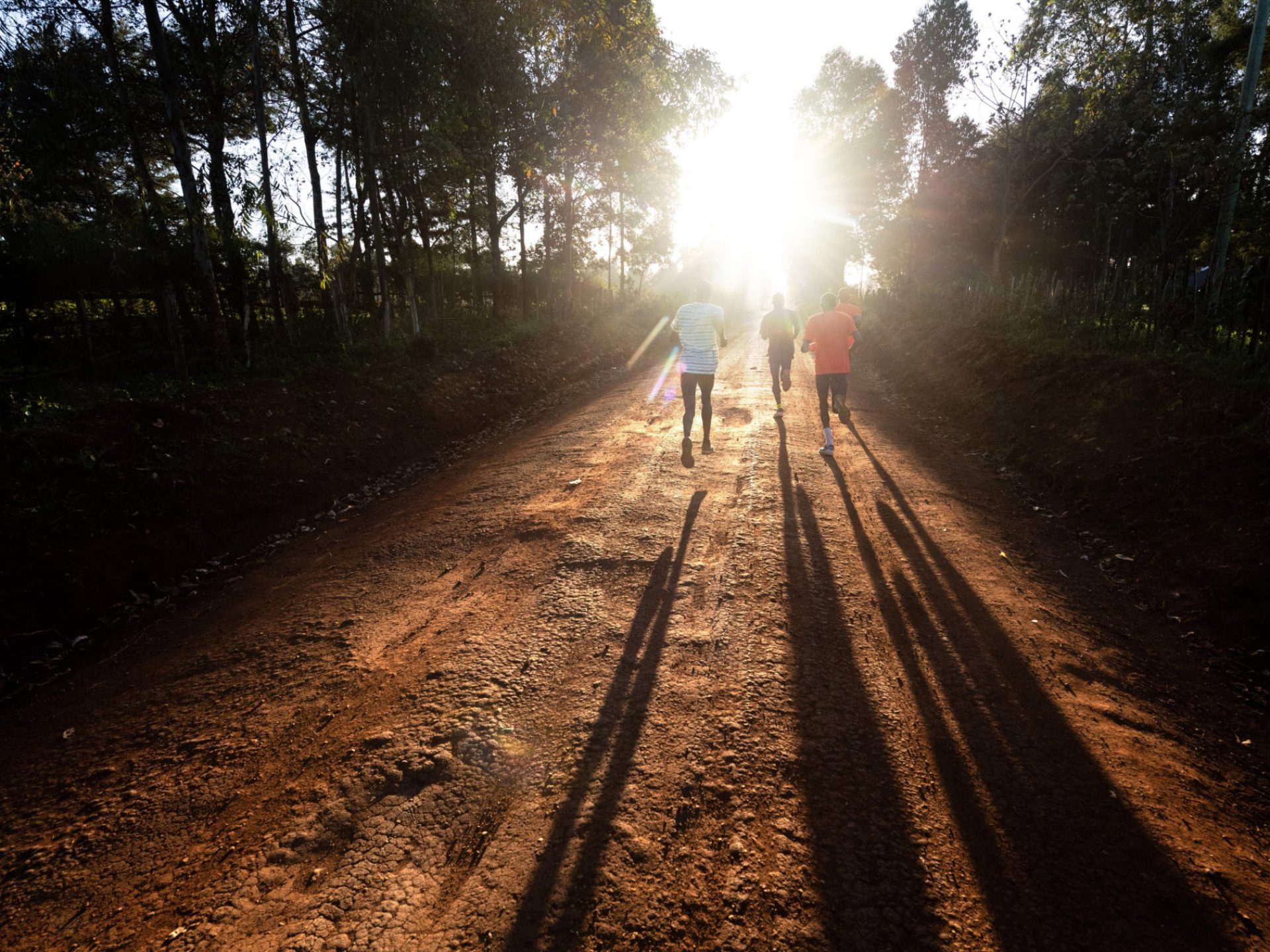Magazine

April 8, 2020

This article was originally published in Populous Magazine, our biannual publication featuring news and trends from the worlds of sport, entertainment, and major public events. Find out more, and sign up to receive a free copy, here.
Why do East Africans so totally dominate long-distance running events? Adharananad Finn, author of Running with the Kenyans, spent six months living in Kenya’s Rift Valley in an attempt to find out. Here he tells us what he found.
It’s one of the most remarkable stories in the history of sport: how one impoverished corner of East Africa came to dominate long-distance running, the most universal and accessible sport in the world.
In the last three Olympic Games, athletes from Kenya and Ethiopia have won two-thirds of all the gold medals on offer in the running events from 800m upwards. The rest of the world combined, with all its facilities and sports science, can’t come close to matching the runners from East Africa. And come Tokyo 2020, there’s no sign of this pattern changing.
When it comes to the world’s major marathons, the dominance over the last 20 years has been even more stark. So what is the secret? In 2011 I set off to live in a small town in Kenya’s Rift Valley with the mission to find out.
What I discovered during six months of living in their training camps, attempting to keep up on their training runs, and during numerous return visits over the years, was not one big secret, but a whole melting pot of factors, all combining to form the perfect recipe for producing long-distance runners.
"Growing up without shoes, without protective cushioning under your feet, means you learn to connect with the ground and move more efficiently."
Firstly, all the key training centres, such as Iten, Kaptagat and Eldoret in Kenya, and Bekoji and Addis Ababa in Ethiopia, are at high altitude, where the thin air makes it harder to run. This is an obvious benefit, and elite runners from all nations will spend part of their year living at altitude to help improve the capacity of their lungs to speed them along. But the advantages gained from being born and raised at altitude, like most East African athletes, are much greater.
Indeed, it is thanks to their upbringing that the East Africans gain the biggest head start. If you ask the Kenyans themselves why they’re so good, they’ll almost certainly start telling you about how far they ran to and from school every day. When I arrived in Iten I thought these stories were perhaps exaggerated or a myth, but on each dawn run, as I ran along the dirt roads, past mud huts and women laden with firewood, I would inevitably be joined by children on their way to school, gliding along effortlessly beside me, carrying bags and wearing sandals or in bare feet.
The bare feet, it turns out, are also part of the recipe. Growing up without shoes, without protective cushioning under your feet, means you learn to connect with the ground and move more efficiently, as your brain responds to the senses on the soles of your feet. Watch any leading Kenyan compete and they seem to glide, barely touching the ground. This almost perfect form comes in part from growing up running everywhere without shoes.
Top Kenyan runners, almost without exception, hail from rural backgrounds where, after running to and from school daily, they then have to herd sheep or fetch water or dig the land. This tough upbringing gives them a base fitness and strength incomparable to the vast majority of Western teenagers. As one coach in Kenya told me: “To build your aerobic house, and to have enough of an endurance base to run long distances, it takes about ten years.” Then, smiling at the simplicity of his advice, he added: “By the time a Kenyan is 16, he has built his house.”
This strong foundation then feeds into the most inspiring running community on Earth. In the small town of Iten, for example, there are around 2,000 full-time runners, crisscrossing each other on the dirt roads every morning like commuters in any other part of the world. In Iten, nobody asks you why you run. The question more commonly posed to everyone else is: “Why don’t you run?”
Among these runners are countless Olympic and world champions, happy to train with everyone else. There are so many successful athletes that almost every village in the region has its star, someone who has been abroad and returned wealthy, to build an impressive house, buy a large car and help support the community. These athletes mix with everyone else, encouraging the younger runners so that the inspiration is direct and tangible.
"In Kenya, running is the only show in town..."
In other countries of the world, there are surely runners just as talented, with tough rural upbringings lived out at altitude. But they don’t necessarily think of running as a viable career or life option. In Kenya, however, running is the only show in town.
In some ways, Kenya’s success is partly a numbers game. At one local track event I attended in Iten, the standard in some events was poor – as you might expect from a remote town in the Rift Valley. In the 100m race there were only two entrants, both barefoot, while in the shot put the winner was wearing a collared shirt and rubber boots. Yet when the 5000m race was announced, around 200 runners emerged onto the track. Overwhelmed, the organisers attempted to divide the runners into different races, with the fast race only for those with a best time of under 13 minutes. Bear in mind that, throughout sporting history, just 24 non-East African runners have ever run the 5000m that fast.
With this amount of talent bursting through; with everyone running and training together, inspiring each other, it’s no wonder that the cream of the crop is so good. It’s almost a wonder that anyone else from the rest of the world even gets a look-in.
In recent years the spectre of doping has cast its shadow over the Kenyan success story, with a number of big-name doping convictions, and the country’s drug testers ruled to be non-compliant – although it’s fair to say they have now improved. It’s impossible for anyone to know the full extent of the problem, of course, but my experience of living in the training camps with some of the best runners is that they are very open.
They let me in as a journalist, to sleep in their camps, eat their food and train with them, often for weeks at a time. I never had the sense that anything was out of bounds or hidden. Of course, the convictions are proof that doping exists, but when you consider the number of top-level athletes in the area, the percentage caught cheating is similar to the rest of the world. The Kenyan story is certainly not simply one of superior doping practices.
So in 2020, in the run-up to the Tokyo Olympics, the top runners will be living in those same simple training camps in the Rift Valley, running together in groups every morning, and passing the schoolchildren who will no doubt one day continue to reinforce East Africa’s proud reputation as the home of long-distance running.
As a large sign at the entrance to Iten proudly proclaims: “Welcome to the Home of Champions”.
Lorem ipsum dolor sit amet consectetur, adipisicing elit. Non facere corporis et expedita sit nam amet aut necessitatibus at dolore enim quis impedit eius libero, harum tempore laboriosam dolor cumque.
Lorem, ipsum dolor sit amet consectetur adipisicing elit. Illo temporibus vero veritatis eveniet, placeat dolorem sunt at provident tenetur omnis, dicta exercitationem. Expedita quod aspernatur molestias eum? Totam, incidunt quos.